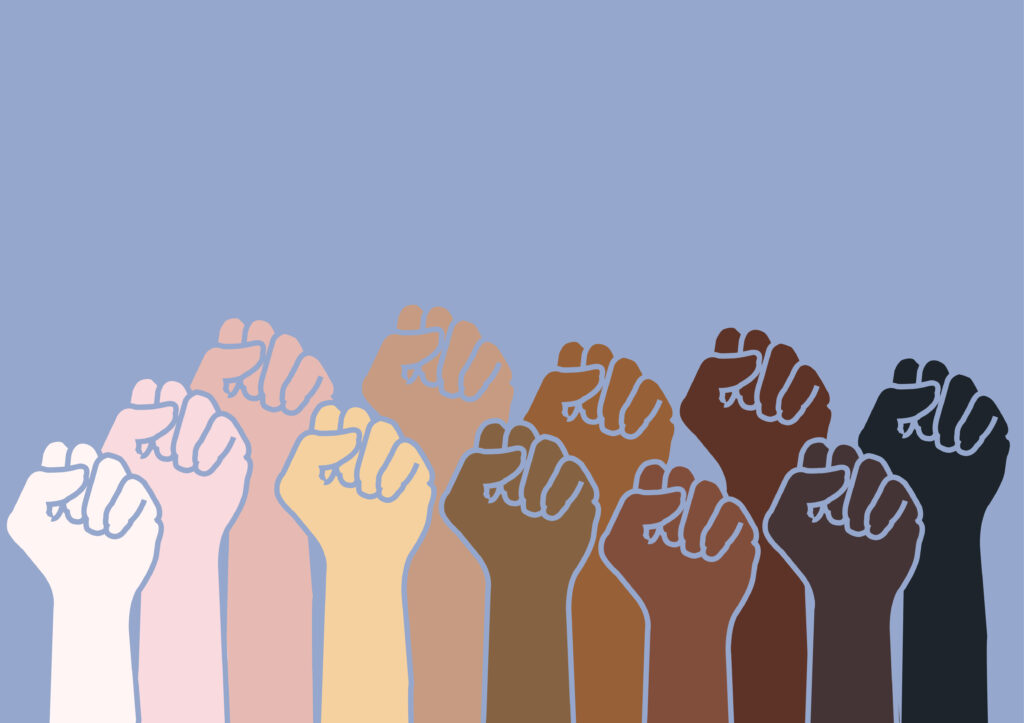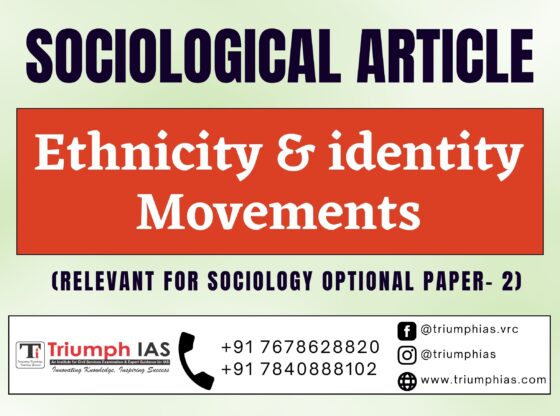Ethnicity & identity Movements
Relevant for sociology optional Paper- 2 (Unit- 13 : Social Changes in India)

Ethnicity and identity movements have been a significant part of Indian politics and society for many decades. These movements have been primarily aimed at addressing the grievances of different ethnic groups and their struggle for recognition, representation, and autonomy. Ethnicity and identity movements are often the result of deep-seated inequalities and historical injustices that have been faced by different groups in India. These movements have been a crucial factor in shaping India’s political, social, and cultural landscape.
India is a diverse country, with numerous ethnic and linguistic groups. The country has over 2,000 ethnic groups and more than 1,600 languages. This diversity has been both a source of strength and a challenge for India. Ethnicity and identity movements have emerged due to various reasons, including historical discrimination, marginalization, economic disparities, and political neglect. These movements have aimed to address these issues and promote the interests of different ethnic and linguistic groups.
One of the significant ethnic and identity movements in India is the Dravidian movement. The Dravidian movement emerged in the southern Indian state of Tamil Nadu in the 1920s and aimed to promote the interests of the Dravidian people. The movement was a response to the perceived discrimination faced by the Dravidian people by the upper-caste Brahmins. The Dravidian movement advocated for the creation of a separate Dravidian state and promoted Tamil language and culture. The movement gained significant support in Tamil Nadu and played a crucial role in the state’s politics.
Another prominent ethnicity and identity movement in India is the Naga movement. The Naga movement is a separatist movement that seeks to establish an independent Naga state. The movement emerged in the 1940s and has been marked by armed struggle and violence. The movement is rooted in the historical grievances of the Naga people, who were excluded from the mainstream political and economic processes. The Naga movement has been one of the longest-running insurgency movements in India and has led to the loss of thousands of lives.
The Sikh movement is another significant ethnicity and identity movement in India. The Sikh movement emerged in the 1970s and aimed to promote the interests of the Sikh community. The movement was a response to the perceived discrimination faced by the Sikh community and the demand for the creation of a separate Sikh state, Khalistan. The movement gained significant support in Punjab and led to the rise of militant groups, such as the Khalistan Liberation Force. The Sikh movement has been marked by violence and has led to the loss of thousands of lives.
The Dalit movement is another important ethnicity and identity movement in India. The Dalit movement emerged in the 20th century and aimed to address the historical discrimination faced by the Dalit community. The Dalit movement advocated for the rights of the Dalit community and demanded social and political equality. The movement has been successful in raising awareness about the discrimination faced by the Dalit community and has led to significant changes in Indian society and politics.
The Adivasi movement is another significant ethnicity and identity movement in India. The Adivasi movement emerged in response to the displacement of tribal communities due to development projects and mining activities. The movement aimed to promote the interests of the tribal communities and demand their inclusion in the mainstream political and economic processes. The Adivasi movement has been successful in raising awareness about the issues faced by the tribal communities and has led to significant changes in government policies towards tribal communities.
The Kashmiri movement is another prominent ethnicity and identity movement in India. The Kashmiri movement is a separatist movement that seeks to establish an independent Kashmir state. The movement emerged in the late 1980s and has been marked by violence and armed struggle. The Kashmiri movement is rooted in the historical grievances of the Kashmiri people, who feel that they have been marginalized by the Indian government. The movement has been a source of tension between India and Pakistan, with both countries claiming the region. The Kashmiri movement has led to the loss of thousands of lives and has been marked by human rights violations by both the Indian security forces and the militant groups. The Kashmiri movement remains a significant challenge for the Indian government and has been the subject of intense political and diplomatic efforts to find a resolution.
In conclusion, ethnicity and identity movements have played a significant role in shaping India’s political, social, and cultural landscape. These movements have been a response to historical discrimination, marginalization, and neglect faced by different ethnic and linguistic groups in India. Ethnicity and identity movements have raised awareness about the issues faced by these groups and have led to significant changes in Indian society and politics. However, these movements have also been marked by violence and armed struggle, leading to the loss of thousands of lives. The Indian government must work towards addressing the grievances of different ethnic and linguistic groups and promoting their inclusion in the mainstream political and economic processes to prevent the emergence of such movements in the future.
For more such free UPSC notes, Articles, News & Views Join our Telegram Channel. https://t.me/triumphias
Click the link below to see the details about the UPSC – Civils courses offered by Triumph IAS. https://triumphias.com/pages-all-courses.php


